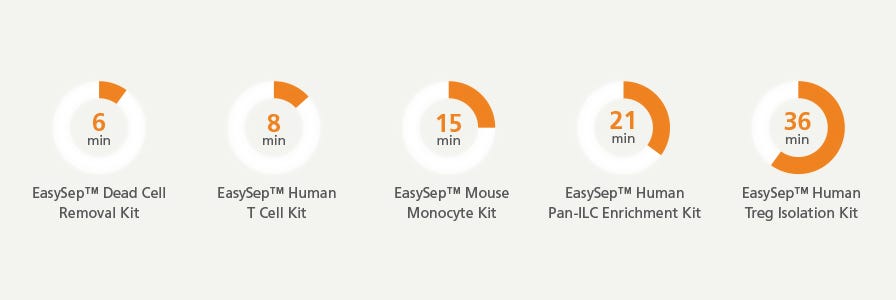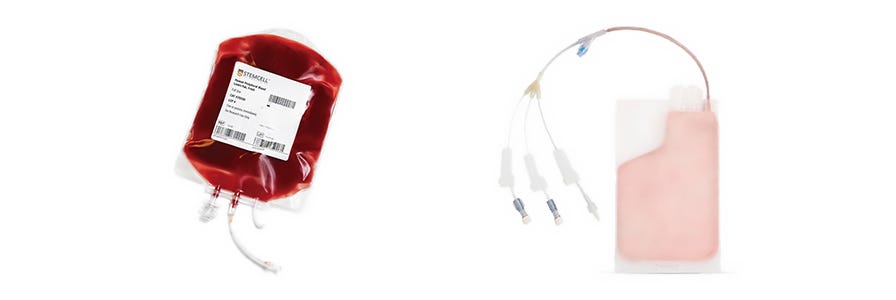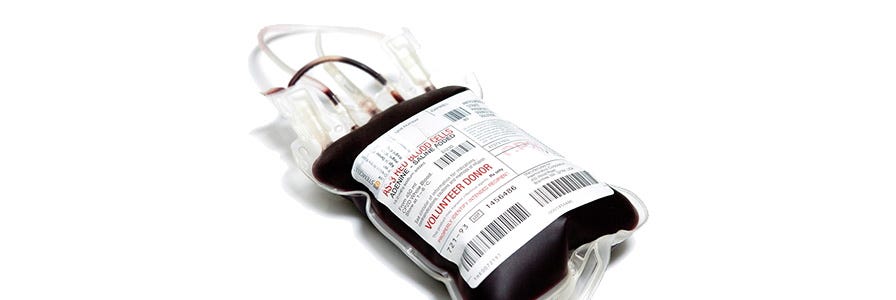Efficient Large-Scale Cell Isolation
Tips and Tools for Isolating Cells from Large-Volume Samples
Why Scale Up?
To meet the growing demand for cell therapies, cell-based vaccines, and drug discovery, scientists need to consider new strategies for increasing the number of cells being sourced, isolated, and cultured for their research. However, isolating large numbers of cells from single or multiple samples can require several rounds of cell separation, which can be both time-consuming and labor-intensive. This repetitive, monotonous practice can delay downstream applications and research progress.
One way to increase efficiency is by scaling up cell separation workflows so that scientists can isolate a large number of cells from one or multiple sources in the fewest number of steps. Large-scale cell isolation can accelerate drug discovery and immunotherapy development by enabling researchers to spend less time isolating cells and more time on their downstream experiments.
Additional benefits of large-scale cell isolation include:
- Reduced biological variability of results: Using cells isolated from the same donor instead of multiple donors reduces biological variability. In the context of drug discovery and finding therapy candidates, using the same donor ensures that the obtained results are due to the therapy candidate and not due to biological differences in donors.
- Fewer donors required: Isolating large numbers of cells from specific donors reduces the need to keep searching for more donors who meet the desired criteria.
- Fewer isolations needed when establishing cell banks: Obtaining sufficient cells to bank for future experiments avoids the need to repeat cell isolations later on.
Ultimately, scaling up provides solutions for obtaining a large number of cells in an efficient manner, with further downstream benefits, to promote high-quality results and advancements in cell therapy and drug discovery research.
Considerations for Large-Scale Cell Isolation
To assess whether you should integrate large-scale cell isolation technologies into your workflows, consider the following questions:
- How long does it take you to process large-volume samples and obtain cells?
- How frequently do you process large-volume samples?
- Does the length of your current cell isolation protocol limit the number of important experiments you can complete in a day?
- Is the length of your current cell isolation protocol negatively impacting the quality of your cells?
- Are there other approaches or methods that could streamline the process, reduce costs, and improve cell quality?

Without scaling up, isolating cells from large-volume samples can be challenging and laborious. It may require a full day to split and process the sample in multiple rounds of isolation. Not only is this process inefficient, but it also creates room for errors that can hinder your cell recovery, purity, and functionality.
Fortunately, commercially available technologies exist that are fast and easy to use, helping to maximize your throughput when processing large-volume samples. These platforms eliminate the need to split your sample, enabling you to perform your cell isolations in significantly fewer steps and with less reagents. Additionally, these platforms are flexible; they still allow you to isolate cells from smaller samples, but once you are ready to increase your sample size, you can use the same platform and reagents for larger-volume cell processing.
In general, if you're frequently processing large-volume samples, switching to a high-throughput cell isolation method can be more efficient and cost-effective, and may have beneficial impacts on the quality of your cells.
About Cost-Effectiveness
In some cases it may appear that using the most inexpensive reagents will be the most cost-effective solution. However, to determine the real cost of a specific technique, it is also important to consider indirect costs such as technologist time, staff training time, user-to-user variability, and expenses associated with increased turnaround time.
Scalable Immunomagnetic Cell Isolation
Scaling up, in the context of cell isolation, involves transitioning to a platform that supports the processing and isolation of desired cells from large-volume samples to reduce the number of steps involved. Platforms that harness immunomagnetic cell isolation technology, such as EasySep™, can provide an efficient, scalable method of isolating highly purified cells from both small and large-volume samples that are ready for downstream applications. When using such platforms, the first step involves processing the large-volume sample into a single-cell suspension. The method you choose to prepare the single-cell suspension will depend on the cell type you want to isolate. Once you have the single-cell suspension, using a large-scale approach enables you to isolate a large number of desired cells in a single cell separation procedure. In contrast, the small-scale approach typically requires multiple rounds of cell isolation.

Figure 1. Large-scale cell isolation platforms require a fewer number of steps to isolate cells from large-volume samples compared to small-scale cell isolation platforms.
Products for Your Large-Scale Isolation Needs
EasySep™ cell separation magnets harness immunomagnetic cell isolation technology to provide a fast and easy way of isolating cells from various samples. Platforms such as the Easy 50 and Easy 250 EasySep™ Magnet allow you to isolate cells from large-volume samples in fewer steps than with smaller-scale platforms, making it ideal for labs that process large volumes of blood and peripheral blood mononuclear cells (PBMCs).
Why Use EasySep™ to Isolate Cells from Large-Volume Samples?
- Isolate cells in as little as 20 minutes.
- Achieve up to 99% of cell purities with high recoveries.
- Obtain viable, functional cells without the need for columns and washes.
- Isolate cells from whole blood and leukopaks.
Easy 50 EasySep™ Magnet
In as little as 25 minutes, process up to 40 mL and 4 x 10^9 cells, with a single separation step, using the Easy 50 EasySep™ Magnet.
Easy 250 EasySep™ Magnet
In as little as 20 minutes, process up to 225 mL of sample and 1.25 x 10^10 cells , with a single isolation step, using the Easy 250 EasySep™ Magnet.
STEMCELL’s EasySep™ magnets are compatible with a wide range of cell isolation kits that are fast, easy-to-use, and highly integratable in a broad range of research fields.
My experience with the EasySep™ was seamless. The protocol is simple & quick, almost too easy, and has allowed me to successfully isolate my cells of interest with high purity. This gives me extra time to do other experiments and confidence in my data.
I do not have experience with other cell isolation products but I have no need to look elsewhere now as the EasySep™ is simple and does the job to perfection!
Matthew Cormier, PhD Candidate
Large-Volume Cell Sources
There are a variety of large-volume cell sources available for large-scale isolation. STEMCELL provides a reliable supply of large-volume samples, such as leukopaks and whole peripheral blood, in a variety of sizes.
Table 1. Comparison of Large-Volume Samples
(9 x 10^9 cells minimum)
*Data shown is for a fresh full Leukopak. This product is available in a range of sizes. See more here.
Note: The cell count will vary depending on the donor.
Leukopaks
Source large numbers of single-donor mononuclear cells (PBMCs) from a fresh (left) or frozen (right) leukopak. Volume ranges from 50 - 583 mL for a full leukopak.
Whole Peripheral Blood
Isolate immune cells from peripheral whole blood samples, with volumes ranging from 10 - ≥ 450mL.










